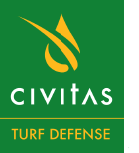


It’s budget season again! (Not that you ever really get a break from budgeting.) The difference is that this year—unlike others in recent past—has been a banner year for growth. According to the National Golf Foundation, golf’s consumer base increased by 900,000 and consumer confidence hit a 14-year high! By all accounts, this is the year to present your new ideas and be strategic about the investment recommendations you make to management.
The question is, how? Your department, after all, is not the only priority at your facility. How do you recommend paying more for seasonal help this year? Or communicate the value of GPS-guided spraying systems?
A strategic approach to your IPM budget
Although your budget comes under review annually, consider the many capital improvements to your course, such as green or bunker updates, tree work, drainage work and other renovations, through a 2-, 5- and 10-year planning process. Insight into your long-term priorities will help keep your budget on track year over year – so start there. What are the key milestones you want to achieve next year? What resources will they require? And, most importantly, how does your plan help the club achieve its overall business objectives?
Buy-in
from your General Manager, Board of Directors or the membership at
large rests on this last question, and is essential to bringing your
vision to life.
So, whatever your key priorities are this year, here are our best tips for better communicating your budget requests.
1. Present your position as a key component of the big picture
In
all likelihood, management doesn’t understand the complexities of your
job. This lack of understanding is a barrier to total budget approval.
Our advice is to start your discussion by establishing the shared goals
in terms of how you want the golf course to improve this year, and how
that will help the course’s larger business objectives. Pull from
mission statements or business planning documents, if they’re available.
Once you’re on the same page, you can establish what it takes to
achieve shared goals.
2. Sell it
Your
task is to present the most compelling argument for your plans.
Whenever possible, provide numbers that show how your work contributes
to revenue generation. Don’t get caught up in agronomic jargon that
could lose your audience. Be clear and use plain language to describe
your plans. Getting input from technicians, horticulturalists and
equipment managers can help to bolster your claims.
3. Use visuals
As
we get wrapped up in details of our jobs, we forget others don’t have
the same up-close-and-personal relationship with the golf course.
Chances are management won’t see all of the same problems you do – so
show them. Take pictures, draw plans and bring in core samples such as
damaged blades from a green in need of repairs. Better yet? Take the key
stakeholders at your club on a guided tour of the course to help them
see what you and your team see.
4. Leverage data from other superintendents
Sometimes
it helps to have some backup numbers from courses in the area. Look to
your network to see what others in your area are budgeting for
irrigation, fungicides, labor, etc. Perhaps another course nearby is
contending with all of the same stresses as your course, but managing
them in a way that requires a larger investment up front. If you can
provide a case study or testimonial from a course you’d like to
duplicate, include these examples in your proposal. If you’re looking to
negotiate wages, look to the GCSAA Compensation and Benefits Report to help.
5. Demonstrate your successes
Give
specific examples of areas that are prospering. Remind management that
you’re getting good returns on investments they’ve made in the past.
6. Be ready to pare down
Budgeting
is often about compromise between competing priorities at your club.
Chances are, you’ll have to make some cuts. If you need help with this,
try using our digital IPM costing tool.
It was designed to help you crunch numbers, plan for the year ahead and
manage your resources. It even allows you to generate custom reports to
help with the rest of your budget presentation.
No matter what you’re aiming to achieve next year, a data-driven approach to your budget with the right numbers to validate your priorities will ensure there’s no room for doubt from your GM or other stakeholders.
Good luck!